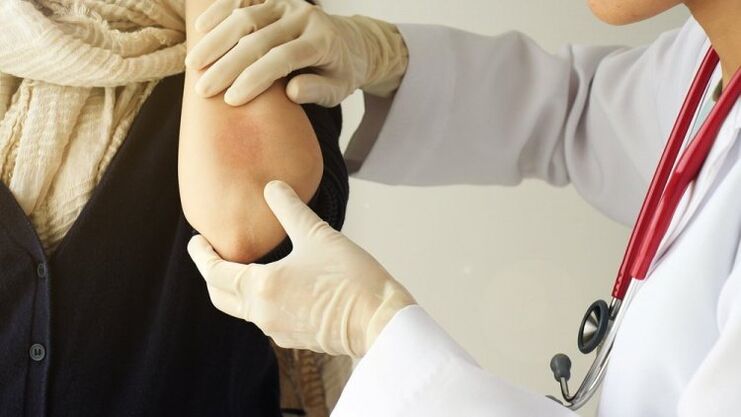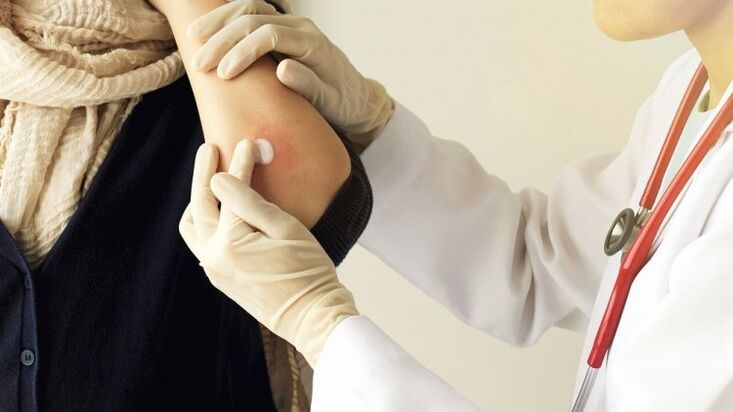Psoriasis is one of the most common chronic dermatoses. With such pathological processes, damage to the skin, as well as skin complement, is noted. The high urgency of this problem lies in the fact that it leads to a deterioration in the quality of life of people who are ill as a result of aesthetic disorders.
Often, the first episode of psoriasis occurs in the age range of fifteen to forty -five years. According to statistics, the disease is diagnosed in about three percent of the entire population. Moreover, the number of women and men with such pathology is in equal proportions.
There are several theories about the mechanism of development of psoriasis. The main one is the autoimmune theory, which says that this pathological process is formed as a result of an improper immune response to any external factors. Excessive immune responses lead to the development of inflammatory responses in the skin layers, which trigger the mechanism of division and multiplication of cellular structures. In addition, it is assumed that hereditary predisposition and exposure to various infectious agents may play a role in the development of the disease.
It is observed that most often psoriasis occurs in people who:
- Have any other dermatological conditions;
- Have thin and dry skin;
- Smoking and drinking alcohol;
- Systematic contact with irritating chemicals;
- Often they injure the skin by mechanical influences;
- Notice the excessive hygiene;
- Subject to severe stress;
- Have a reduced level of immune defense or use medications that suppress immunity.
Depending on the symptoms of psoriasis, it is customary to classify this pathology into several forms:
- Plaque shape. This form is the classic version. It occurs in more than eighty percent of people. The clinical picture in this case is characterized by typical scaly plaques, which tend to grow peripherally;
- The form of teardrops. Persistent disease in this form is accompanied by the appearance of many small foci on the surface of the skin. Such lesions can have very different colors, be raised above the surface of the skin and exfoliate vigorously. As a rule, they do not increase in size, only their number grows;
- Exudative form. It is one of the most unprofitable options. In this case, bubbles and blisters filled with serous fluid form on the surface of the plaque. Often, such elements undergo a secondary infection with the subsequent appearance of pus in them;
- Psoriatic onychodystrophy. It is characterized by the involvement of the nail plate in the pathological process, which becomes lined and thickened. In most cases, nails change color, flake off and break. In further cases, complete loss of the nail plate is possible;
- Psoriatic arthritis. The symptoms of psoriasis in this case are indicated by inflammation of the joints and connective tissue. In some cases, this form develops on its own, but often it is accompanied by skin manifestations;
- Psoriatic erythroderma. This form is characterized by a very severe and often fatal course. The development of inflammation in large areas of the body, accompanied by intense exfoliation and detachment of the skin, is observed.
The main symptoms of psoriasis

We will talk in more detail about the classical form. What does psoriasis look like? First of all, on the surface of the skin, a single papule appears that has a pink or red color. These papules are covered with silvery white scales that are easily scraped off. Over time, the number of papules increases, they begin to coalesce into plaques.
Plaques that form during the disease have a hyperemic appearance and edema. In some cases, mild itching on the skin may be present. The pathological focus has a tendency for relatively rapid peripheral growth, and its surface is highly flaky. Over time, plaque growth stops, and its boundaries become clear. A special sign of such a pathological process is a pseudoatropic rim, localized along the focal edge. At the stationary stage, the appearance of stagnant cyanotic color on the plaque surface was noted.
Symptoms of psoriasis in the regression stage are characterized by a gradual disappearance of desquamation, starting from the middle part. After that, the skin acquires a normal color, after which tissue infiltration disappears.
Diagnosis and treatment of this disease

First of all, psoriasis is established based on its clinical picture. There are a triad of specific phenomena that indicate this pathological process: stearin spots, terminal films and blood clots. The phenomenon of stearic spots is that when the lesion is scraped, the exfoliation becomes more intense. If we continue to scrape, then a thin film peels off and the appearance of wet and hyperemic surfaces is observed - the phenomenon of terminal film. The phenomenon of blood dew implies the presence of punctate bleeding with subsequent erosion.
Of the remedies for this disease, the following can be used:
- Glucocorticosteroids;
- Cytostatic;
- Antihistamines;
- Keratolytic and anti-inflammatory ointment.
In addition, a variety of physiotherapy treatments are widely used.
Prevention of exacerbations in psoriasis
To avoid deterioration, it is recommended to avoid stressful situations, abandon bad habits and eat well. In addition, you should limit any irritating effects on the skin and avoid contact with substances to which you are allergic.























